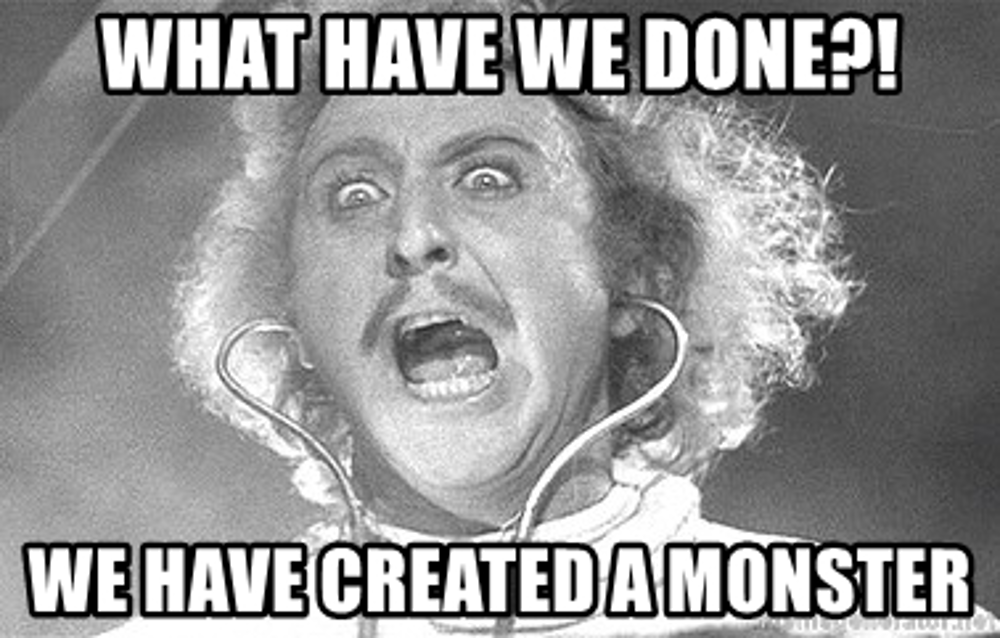So, you created a success story! Great, this proves that you believe in the marketing power of your customer base. But why don’t we hear any congratulations from the jury? Well, chances are you messed up along the way. And there are many ways to do that. Let’s look at five reasons why nobody in your sales or marketing department likes your success story.

1. Your success story is not about your customer.
Many success story writers make the mistake to talk about themselves too much. A customer story should be all about your customer, not about your own company.
OK, let’s nuance that a bit. A success story is still a sales tool, so it should actually talk about your company as well. That said, a lot of success stories take it too far and are nothing less than a sales pitch in disguise. And nobody wants to read that from you when they expect a good story. Success stories where you are in the spotlight all the time, instead of your customer, are a waste of time.
How to fix this:
Customer stories are all about authenticity. If you want to make a connection with your readers, you will need to make sure that they can relate to the story. So, stop the chest beating and make sure that your customer is the hero of your story.
2. Your success story follows a worn-out formula.
This is how most success stories are structured:
- Customer problem
- Company solution
- Customer results
It’s a formula we know all too well. And while it might be effective to get the message across and to have structure in your story, it’s a formula that can get a bit stale. The problem – solution – results architecture definitely has benefits. It offers brevity and clarity, which is great to have in a world where nobody seems to have time or patience to read anymore.
But the formula has little to do with storytelling and often it is too easy and too boring. To me personally, if I’m reading subtitles like ‘challenge’ – ‘solution’ – ‘results’ in a success story, I know I’m going to get a ready-made meal, not an exciting gourmet dish. There’s nothing wrong with a ready-made meal every now and then, but don’t expect your customer to be very excited about it.
There are many ways to avoid the tried-and-true ‘challenge-solution-results’ formula.
How to fix this:
Although success stories are essentially stories about solved challenges and about results, you don’t always need to lay it on too thick. There are many ways to add a little salt and pepper to your story and to avoid the tried-and-true formula.
Here are some alternatives I like to use:
- Treat your story like a magazine article, with a catchy hook, an intriguing narrative and a little drama.
- Turn your story into a Q&A article, an easily digestible rendition of the customer interview.
- Make a ‘day in the life story’, where you closely follow your customer while he or she is using your product. Great format for video testimonials, by the way.
3. Your story lacks personality.
Sometimes, your customer will not allow you to mention names, show people or present a quote. Especially when you are dealing with some kind of governmental organization or agency, it can be very hard to get people to talk on the record. Unfortunately, there’s not much you can do about that.
But even with less restricted businesses, customer stories often stick to the dry facts and forget to mention the people who were part of the story. That’s a shame, because adding a personal touch can make your story sound more authentic.
How to fix this:
Whenever you can, present real people in your story, show a head shot of your customer and let them comment on your product in their own words, not in your words.
4. Your success story sounds like a sales pitch.
Sometimes, a story seems too good to be true. The customer had a problem and BAM there you were solving the whole problem in no time. When the story is stuffed with superlatives, it can’t be very authentic. When readers are expecting a case study but are presented with a sales pitch, they will feel tricked into reading your stuff.
How to fix this:
Again, it’s about telling an authentic story. You need to present the pains your customer felt when he was looking for a solution and the journey he went through before finding it. What did he try? Why didn’t it work and why was the customer so frustrated? And while you’re at it, don’t be afraid to talk about the hiccups you went through as a solution provider.
5. Your story tries to tell too much.
Very often, stories are developed by a committee of authors and contributors. Everyone needed to have a say in it and this resulted in a story that lacks punch and focus.
Avoid writing stories by a committee of authors and contributors.
Does your story really need to include your customer’s company history? Do you really need to mention that the customer also took your training course? Do you really need quotes from three different people?
Some stories just try to tell too much. They lack focus. Mostly this is because nobody thought about the reason why they needed a story in the first place. A lot of information was collected during the customer interview and everything was added in.
How to fix this:
Before you start working on your story, define why you need it first. Do you want to highlight a specific product? A specific customer region or market? If so, focus on that and leave out the rest. Sometimes, less is more.

